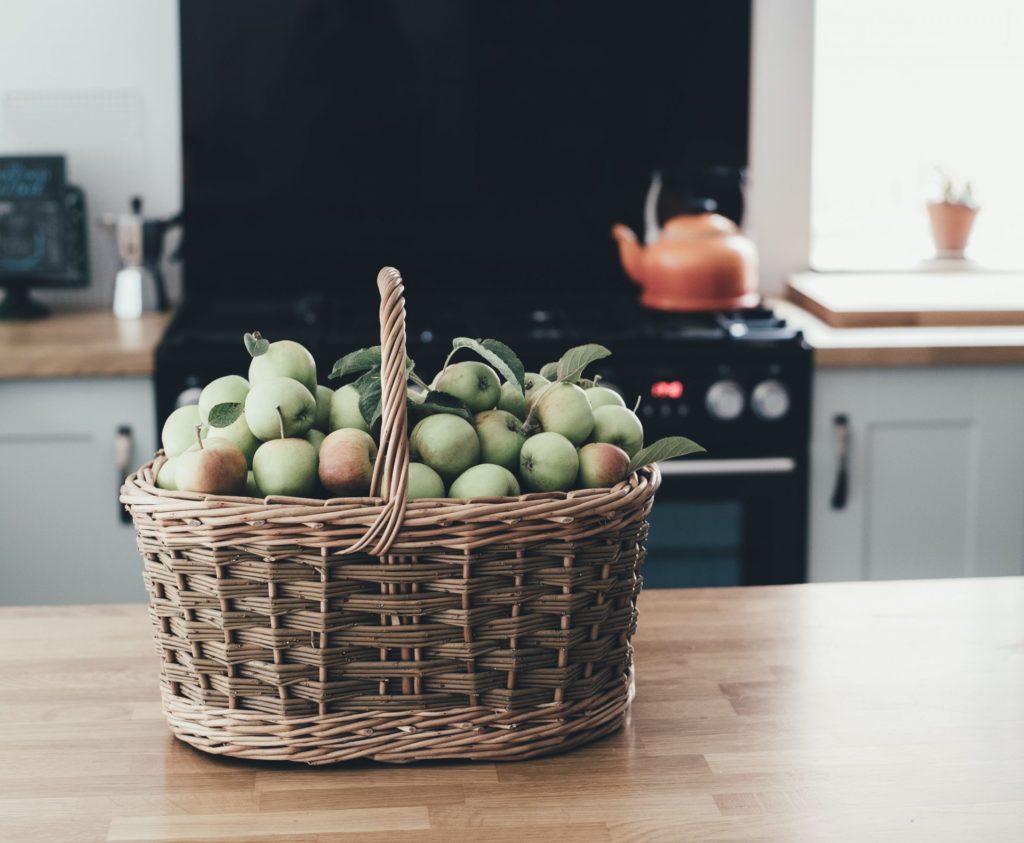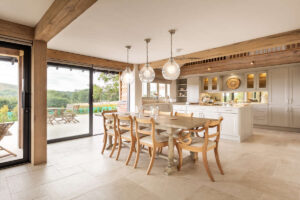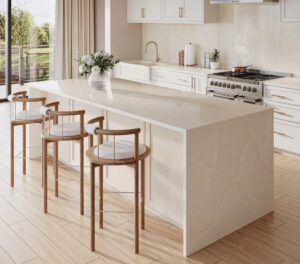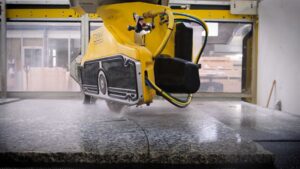The History Of Kitchen Worktops
Continuous counters are so common today that most people can’t imagine building a kitchen without them. At the start of the 20th century, however, they were a brand new design feature only seen in a few kitchens. What changed over the the last hundred years?
The first kitchen worktops
If you look at photos of kitchens taken before 1900, kitchen worktops don’t appear. Kitchens look sparse and empty, with plenty of blank wall space and typically a china cabinet, a table and a range. Sinks are optional and may have a pump or space for buckets to rest rather than running water. This is an era where 1.5 million people in Britain worked as domestic servants and those who couldn’t afford servants often couldn’t afford a separate kitchen, either.
By about 1920, kitchen worktops are starting to appear. They don’t dominate the room, like they do today, but you might spot a length of worktop around the sink or perhaps a china cabinet that has evolved space to work between the upper cabinet and the lower one. The worktops are typically made of wood and many don’t have built in cabinets underneath. To our modern eye, they seem to float in mid-air.
After the war
 In Britain, the Second World War effectively gave the young women who had traditionally become domestic servants other choices. As a result, even the middle and upper classes started doing their own cooking and cleaning and wanted nicer kitchens. Rebuilding homes damaged by bombs and urban slum clearance in the 1950s and 1960s lead to more ordinary family homes being built with a dedicated kitchen intended for the family to use themselves.
In Britain, the Second World War effectively gave the young women who had traditionally become domestic servants other choices. As a result, even the middle and upper classes started doing their own cooking and cleaning and wanted nicer kitchens. Rebuilding homes damaged by bombs and urban slum clearance in the 1950s and 1960s lead to more ordinary family homes being built with a dedicated kitchen intended for the family to use themselves.
As rationing ended and consumerism took off, Brits were looking across the Atlantic to the USA for design inspiration. Larger homes and an economic boom meant that American kitchens were worth admiring – and they all had worktops. Wood was still a popular worktop material, but vinyl, linoleum and other new materials were also coming into play.
Why kitchen worktops became essential
While the fortunate few were bemoaning the loss of personal servants after the Second World War, the vast majority of Brits were enjoying constantly improving living standards. You probably know someone who remembers growing up without running water, electricity or an indoor toilet.
As kitchen design stopped being about creating efficient factories for the great houses and started focussing on ordinary family homes, the kitchen worktop came into its own. Kitchen worktops aren’t just an effective workspace – they also help increase the storage in a kitchen in an attractive way. As gadgets and appliances evolved, kitchen counters developed to hold them and hide them. From early electric kettles and twin-tub washing machines to microwaves and tumble driers, we’ve replaced the servants of yore with handy gadgets.
Kitchen worktops today
 A kitchen that’s the heart of the home, rather than a workplace, needs space for all the trappings of everyday life. While a cook in 1900 would have often had a kitchen maid, a pantry and perhaps another room for storage (or a dozen, in the grandest houses), today pantry, scullery and laundry have been replaced by the refrigerator, dishwasher and washing machine.
A kitchen that’s the heart of the home, rather than a workplace, needs space for all the trappings of everyday life. While a cook in 1900 would have often had a kitchen maid, a pantry and perhaps another room for storage (or a dozen, in the grandest houses), today pantry, scullery and laundry have been replaced by the refrigerator, dishwasher and washing machine.
Today, you can design your kitchen to suit your own family and your own lifestyle. There’s a wealth of choice that our ancestors wouldn’t have been able to imagine. From wood and vinyl to precision cut marble, toughened glass and engineered stone your kitchen worktop – and what it holds and hides – can be a true reflection of your personal style.





